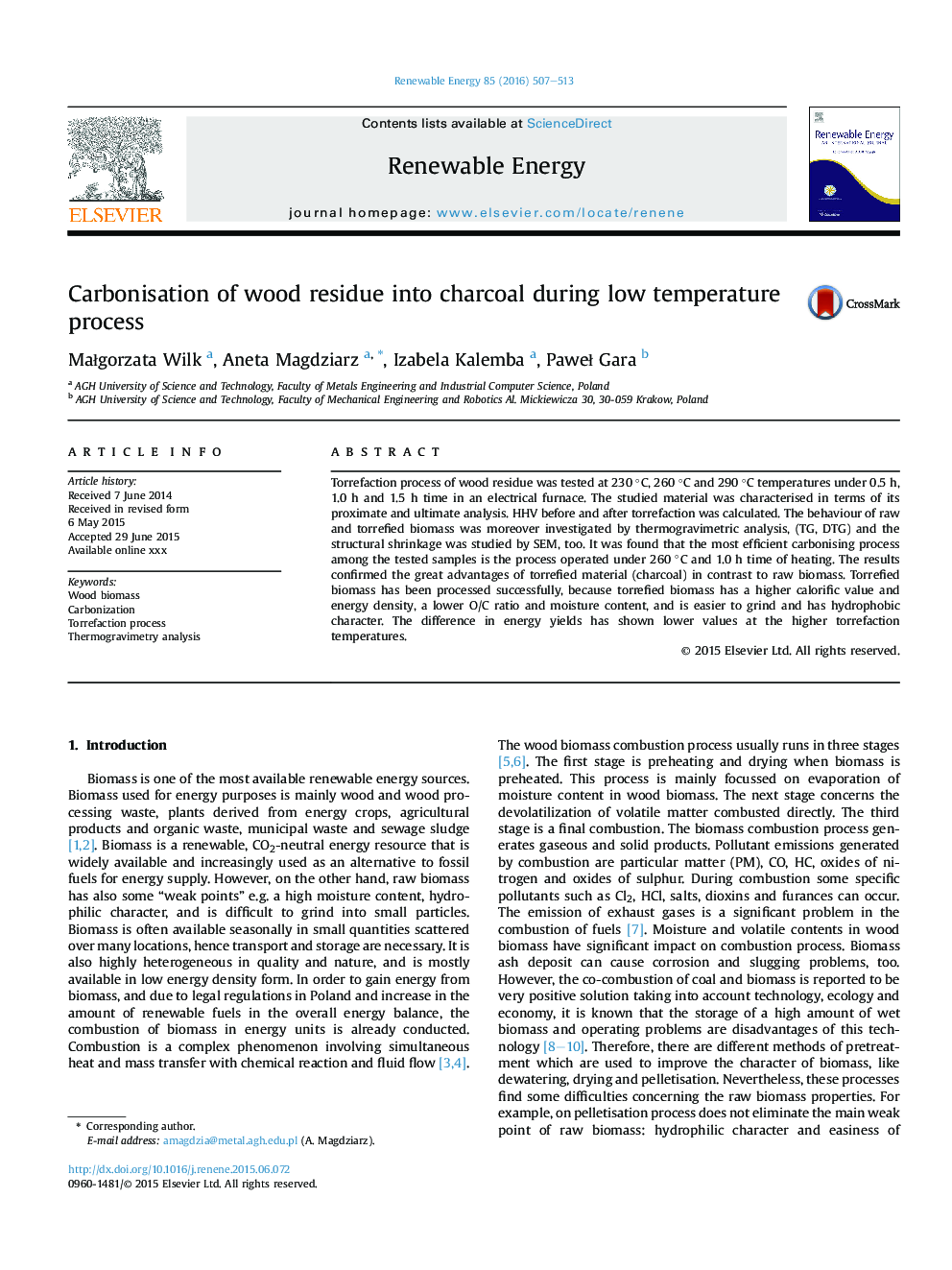| Article ID | Journal | Published Year | Pages | File Type |
|---|---|---|---|---|
| 6766642 | Renewable Energy | 2016 | 7 Pages |
Abstract
Torrefaction process of wood residue was tested at 230 °C, 260 °C and 290 °C temperatures under 0.5 h, 1.0 h and 1.5 h time in an electrical furnace. The studied material was characterised in terms of its proximate and ultimate analysis. HHV before and after torrefaction was calculated. The behaviour of raw and torrefied biomass was moreover investigated by thermogravimetric analysis, (TG, DTG) and the structural shrinkage was studied by SEM, too. It was found that the most efficient carbonising process among the tested samples is the process operated under 260 °C and 1.0 h time of heating. The results confirmed the great advantages of torrefied material (charcoal) in contrast to raw biomass. Torrefied biomass has been processed successfully, because torrefied biomass has a higher calorific value and energy density, a lower O/C ratio and moisture content, and is easier to grind and has hydrophobic character. The difference in energy yields has shown lower values at the higher torrefaction temperatures.
Related Topics
Physical Sciences and Engineering
Energy
Renewable Energy, Sustainability and the Environment
Authors
MaÅgorzata Wilk, Aneta Magdziarz, Izabela Kalemba, PaweÅ Gara,
